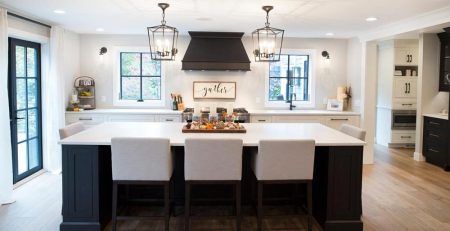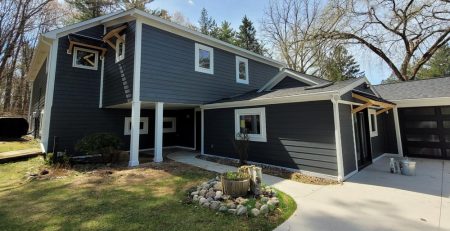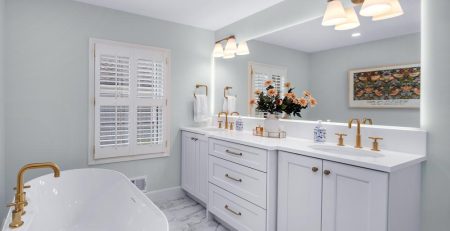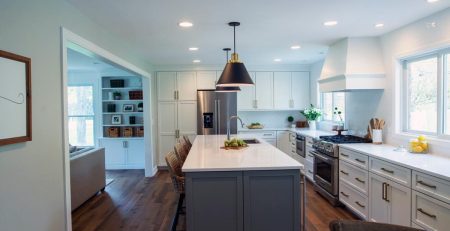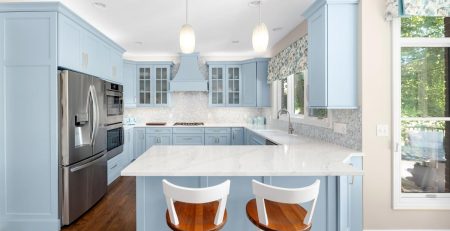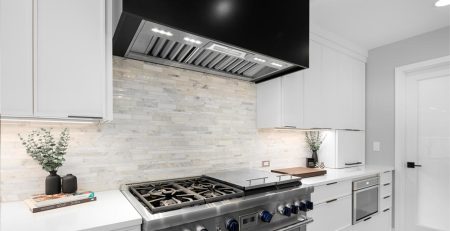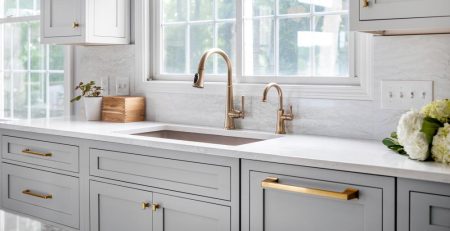Pros & Cons of Open Shelving in Your Kitchen
Open shelving in kitchens has become a popular design choice, celebrated for its potential to transform the space both visually and functionally. This design element offers a unique departure from traditional closed cabinetry, introducing a style that is both modern and versatile. However, as with any design choice, it comes with its own set of advantages and drawbacks. To help you determine whether open shelving is right for your kitchen, let’s delve into its pros and cons in detail.
Pros of Open Shelving
Visual Appeal and Airiness
One of the most compelling advantages of open shelving is its ability to create a sense of openness and airiness in the kitchen. By removing the cabinet doors, open shelves allow for a more transparent and fluid space. This can be particularly beneficial in smaller kitchens where space is at a premium. The absence of bulky cabinet fronts can make the room feel less confined, allowing light to flow more freely and enhancing the overall sense of space. This visual openness can also contribute to a more relaxed and inviting atmosphere, making the kitchen a more pleasant place to spend time.
Showcasing Decor and Collections
Open shelving provides an excellent opportunity to showcase decorative items and personal collections. Unlike closed cabinetry that hides everything behind doors, open shelves turn functional storage into a display area for elegant dishware, unique glassware, or a curated collection of cookbooks. This feature allows homeowners to infuse their personality into the kitchen’s design, transforming it from a purely functional space into one that reflects their individual style and taste. The ability to highlight beautiful or meaningful items can make the kitchen feel more personal and customized.
Accessibility and Convenience
From a practical standpoint, open shelving offers increased accessibility and convenience. Items on open shelves are readily visible and easily reachable, eliminating the need to open and close cabinet doors to find what you need. This can streamline cooking and meal preparation, as frequently used items like plates, glasses, and spices are readily at hand. The open design can make daily tasks more efficient and less cumbersome, particularly in busy kitchens where ease of access is a priority.

Efficiency in Small Spaces
In compact kitchens, open shelving can maximize storage without overwhelming the visual space. By utilizing vertical wall space, open shelves can help make the most of limited floor area. This approach is particularly effective in small kitchens where every inch counts, allowing for additional storage while maintaining a sense of openness. The vertical arrangement can also help keep countertops clear, contributing to a more organized and functional kitchen layout.
Cost-Effective and Easy Installation
Open shelving can be a cost-effective alternative to traditional cabinetry. It generally requires fewer materials and a simpler installation process, which can lead to savings on both the cost and time of renovation. This can be an appealing option for those looking to update their kitchen without a significant financial investment. The straightforward nature of open shelving also means that it can be a more accessible design choice for DIY enthusiasts or those working within a tighter budget.
Versatility in Design
Another advantage of open shelving is its versatility. This design element can be adapted to a wide range of kitchen styles, from modern and minimalist to rustic and eclectic. Open shelves can complement different design aesthetics and offer flexibility in terms of decor and layout. This adaptability makes open shelving a suitable choice for various design preferences and allows for easy updates or changes in style over time.
Encourages Organization
Open shelving encourages a higher level of organization and tidiness. Since everything is visible, there is a natural incentive to keep items neatly arranged and well-curated. This can help prevent clutter and promote a more orderly kitchen environment. The need for regular organization can also contribute to a more disciplined approach to kitchen storage, leading to a cleaner and more aesthetically pleasing space.
“When considering open shelving, it’s important to evaluate how it fits with your lifestyle and maintenance preferences. If you enjoy showcasing decorative items and don’t mind the extra effort required to keep the shelves clean and organized, open shelving can be a stylish and functional choice.”
Cons of Open Shelving
Dust and Maintenance
Despite its many advantages, open shelving does come with certain drawbacks, the most notable being increased maintenance. Open shelves are exposed to dust and kitchen grease, which can accumulate more quickly than in closed cabinets. This requires frequent cleaning to ensure that the shelves and their contents remain hygienic and visually appealing. For those who prefer a low-maintenance kitchen environment, this aspect of open shelving may be a significant consideration, as it demands a commitment to ongoing upkeep.
Limited Concealment of Clutter
Another challenge with open shelving is the exposure of all items to view. Unlike closed cabinets that can hide clutter and less-than-perfect items, open shelves lay everything bare. This means that any disorganized or mismatched dishware can detract from the overall aesthetic. To maintain a clean and attractive look, homeowners must be diligent about organizing and curating the items on display. This requirement can be both a blessing and a curse, as it encourages tidiness but also necessitates ongoing effort to prevent a cluttered appearance.
Potential for Clutter
The open nature of these shelves also means that they can easily become cluttered if not properly managed. Items on open shelves are subject to more scrutiny, and without careful organization, the shelves can quickly look chaotic. This potential for clutter can detract from the kitchen’s aesthetic appeal and require regular attention to maintain a visually pleasing environment. Homeowners must be prepared to invest time and effort into keeping the shelves orderly and well-maintained.
Exposure to Grease and Cooking Residue
Open shelves in the kitchen are also more susceptible to exposure from cooking activities. Items stored on these shelves are at risk of attracting grease, moisture, and food residue, which can lead to quicker wear and tear. This exposure necessitates more frequent cleaning and careful selection of materials that can withstand the conditions of a busy kitchen environment. For those who value convenience and cleanliness, this aspect of open shelving can be a significant drawback.

Security and Safety Concerns
Safety is another important consideration, particularly for households with young children or pets. Open shelves make it easier for little hands or curious animals to reach fragile or potentially hazardous items. This exposure requires careful placement of items and, in some cases, the use of solutions to prevent accidents. If you have young children or pets, this aspect of open shelving may necessitate additional precautions to ensure a safe and functional kitchen environment.
Privacy and Concealment
Some homeowners prefer the privacy and concealment offered by closed cabinetry. Open shelving offers less privacy, as all items are exposed to view. This can be a drawback for those who prefer to hide everyday kitchen essentials or maintain a more streamlined appearance. The open design can also make the kitchen feel less private, as guests and visitors have a clear view of all stored items.
Styling Challenges
Maintaining a cohesive and visually appealing display on open shelves can be challenging. Curating open shelves requires a keen eye for design and a thoughtful approach to organization. Balancing practical storage needs with aesthetic considerations can be tricky, and achieving a polished look may take effort and creativity. This aspect of open shelving can be both rewarding and demanding, depending on your design sensibilities and organizational skills.
Kitchen Renovations in Oakland County, MI
Open shelving in the kitchen offers a blend of aesthetic appeal and practical benefits, including enhanced visual space, personalization, and convenience. However, it also presents challenges related to maintenance, organization, and safety. Understanding these pros and cons can help you make an informed decision about whether open shelving aligns with your kitchen needs and design preferences.
When considering open shelving, it’s important to evaluate how it fits with your lifestyle and maintenance preferences. If you enjoy showcasing decorative items and don’t mind the extra effort required to keep the shelves clean and organized, open shelving can be a stylish and functional choice. On the other hand, if you prefer a more concealed and low-maintenance approach, traditional cabinetry might better suit your needs.
By weighing the advantages and drawbacks in the context of your specific situation, you can create a kitchen that not only looks beautiful but also meets your practical requirements and enhances your daily cooking experience. Ultimately, the goal is to design a space that reflects your personal style while offering the functionality and convenience you need.
Connect with our team of design+build experts at (248) 260-7639 or contact us here to get your project started.



